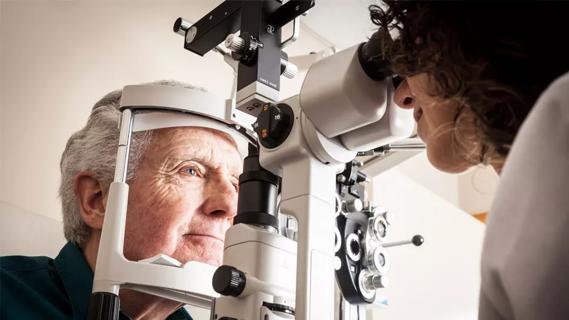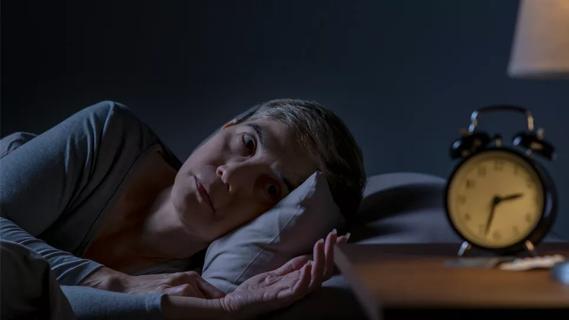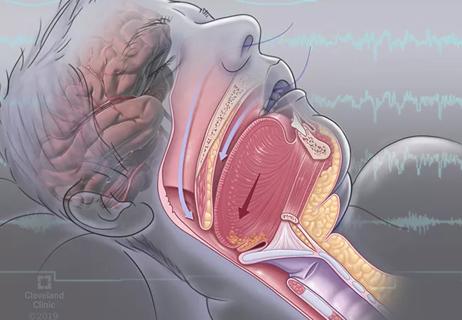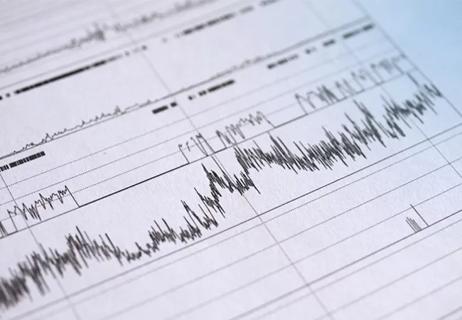Nearly 80% of patients didn’t follow washout protocol, raising risk of misdiagnosis

Although patients scheduled for a multiple sleep latency test (MSLT) are instructed to discontinue medications that may interfere with rapid eye movement (REM) sleep at least two weeks before their test date, the vast majority fail to do so. In such cases, the MSLT is less likely to capture sleep-onset REM periods (SOREMPs) and is more likely to result in longer mean sleep latency (MSL), providing a more normal overall sleep picture and potentially masking the diagnosis of an underlying hypersomnolence disorder.
Advertisement
Cleveland Clinic is a non-profit academic medical center. Advertising on our site helps support our mission. We do not endorse non-Cleveland Clinic products or services. Policy
So conclude Cleveland Clinic researchers following a retrospective analysis of MSLT results according to patients’ reports of how long before their test they had last taken an REM-suppressing antidepressant (REMS-AD) medication. The study was detailed in an oral presentation at the SLEEP 2024 meeting of the American Academy of Sleep Medicine and the Sleep Research Society.
“We were surprised to observe such low rates of medication discontinuation per MSLT protocol requirements,” says the study’s senior investigator, Nancy Foldvary-Schaefer, DO, MS, Director of the Sleep Disorders Center at Cleveland Clinic. “This puts the patient at risk for having a missed diagnosis of a disorder that can cause significant morbidity and for which effective medications are available.”
The MSLT is currently integral to the diagnosis of central hypersomnolence disorders. These conditions are characterized by excessive daytime sleepiness, which has a reported prevalence of 8.5% to 22% in the general population and can have substantial health and quality-of-life impacts. A portion of these cases can be attributed to a central hypersomnolence disorder, with the most common being narcolepsy type 1 followed by narcolepsy type 2 and idiopathic hypersomnia.
“The differential diagnosis of excessive daytime sleepiness is quite broad, so identifying cases attributable to a central hypersomnolence disorder and then distinguishing between these disorders is crucial, given the lack of a biomarker,” says Dr. Foldvary-Schaefer.
Advertisement
Although theMSLT is highly reliable for diagnosing narcolepsy type 1, it is less reliable for diagnosing idiopathic hypersomnia, in which the MSLT is normal in more than 30% of cases, and for diagnosing narcolepsy type 2.
Moreover, depression is common in patients with a sleep disorder, and it can be a major confounder for diagnosing a hypersomnolence disorder. Many patients are treated with REMS-ADs, most of which have a washout period of two weeks (six weeks for fluoxetine).
Although patients are instructed to stop REMS-ADs for the appropriate time before their MSLT, doing so is challenging and can potentially pose a risk to the patient. Informed consent and collaboration with psychiatric providers are required, although these measures do not ensure successful adherence to discontinuation instructions.
The current study was designed to determine patient fulfillment of MSLT protocols regarding REMS-AD use and the effects on the MSLT of different washout periods.
The researchers reviewed 180 MSLTs from among more than 1,600 performed at Cleveland Clinic from 2012 to 2023, one of the largest databases of its kind in the U.S. Evaluation included polysomnography, sleep logs and actigraphy to evaluate sleep insufficiency, as well as urine toxicology and treatment of obstructive sleep apnea when applicable.
If patients had been taking REMS-ADs, they were advised to discontinue these antidepressants (as well as any alerting agents, benzodiazepines or other sedating medications) two weeks before testing (six weeks for fluoxetine). Dates of last use of medications were recorded in the technical notes at the time of the MSLT.
Advertisement
Of the 180 patients in the cohort (69% female; mean age, 36.3 years), 80 had been prescribed REMS-ADs — mostly selective serotonin reuptake inhibitors, followed by serotonin/norepinephrine reuptake inhibitors and tricyclic antidepressants. These 80 patients were classified into two groups: those who stopped the medications at least 14 days before their MSLT, per protocol (n = 17; 21.3%), and those who stopped the medications less than 14 days before their MSLT (n = 63; 78.7%). The mean (± SD) timing of REMS-AD washout was 7.3 ± 13.9 days prior to the MSLT.
The remaining 100 patients had not used REMS-ADs and served as a control group.
The various groups were compared with linear and logistic regression analyses for occurrence of indicators of a hypersomnolence disorder — i.e., MSL ≤ 8 min and ≥ 2 SOREMPs — with adjustments for age, sex and body mass index. “Occurrence of two or more SOREMPs and a mean sleep latency of 8 minutes or less on the MSLT is required for a diagnosis of narcolepsy,” Dr. Foldvary-Schaefer notes.
Analysis of the overall cohort showed that patients with REMS-AD use were less likely than those without REMS-AD use to have indicators of a hypersomnolence disorder, although the differences were statistically significant only for measures related to SOREMPs, not those related to MSL.
Multivariable analysis suggested that these differences were primarily due to findings among patients whose REMS-AD washout duration met the 14-day protocol requirement, as evidenced by the following:
Advertisement
“Washout of REMS-AD medications of less than 14 days before the MSLT was associated with reduced odds of capturing SOREMPs and an increase in mean sleep latency,” Dr. Foldvary-Schaefer observes. She notes that the MSL findings were not statistically significant when the analysis was restricted only to patients using REMS-ADs, which she says is likely due to the smaller sample size.
“Our study is unique in that it was based on analysis of real-world data on the actual day of REMS-AD discontinuation relative to the MSLT rather than on recommended protocol times, which strengthens its importance for informing pre-test planning,” Dr. Foldvary-Schaefer says. “The fact that only 21% of patients taking REMS-AD were able to discontinue the medications according to protocol underscores the difficulty of adhering to critical MSLT guidelines.”
Dr. Foldvary-Schaefer leads multiple studies designed to improve the diagnosis of central hypersomnolence disorders. More than 1,600 patient MSLTs are available to her team for analysis through the Cleveland Clinic STARLIT (Sleep Signals, Testing and Reports Linked to Patient Traits) Registry. She notes that this initial investigation of 180 patients was a pilot study and that her team plans to publish a similar study incorporating the entire registry cohort. The team’s studies also include use of artificial intelligence to analyze a large number of parameters with the goal of enhancing sleep tests.
“It’s important that we highlight the challenges of the MSLT, as we are currently still dependent on it in the U.S. for diagnosing central hypersomnolence disorders,” adds Dr. Foldvary-Schaefer, who has made the case for alternative testing for disorders that have a poor track record of being diagnosed with the MSLT. “Patients are regularly referred to me who are debilitated by these conditions but test normally. It’s incumbent upon us to improve our diagnostic approach, especially since effective medications are now available.”
Advertisement
Advertisement

Study highlights value of sleep disorder screening and targeted management strategies

Specificity in study criteria yields sleep disorder insights

Study explores association between sleep aid and eye disease

Large cohort study suggests need for routine sleep screening as part of neurological care

Testing options and therapies are expanding for this poorly understood sleep disorder

For the first time, risk is shown after accounting for underlying contributions of pulmonary disease

Study sheds light on how clinicians addressed their patients’ pain and insomnia during the pandemic

Normal or inconsistent MSLT results should not rule out this debilitating disorder